Sgraffito
About Sgraffito Designs
"Sgraffito" is from the Italian, meaning "to scratch." It's a technique wherein designs are scratched into the surface of a piece of pottery, generally with the use of a needle, dental tool or other sharp object. Also usually, the surface of the piece has been slipped with one color of clay and scratching through it reveals the design in a different color of clay. Some potters will slip a piece with layers of various colors of clay and the depth of their etching gives a color depth to their designs. Some will fire their pieces first, using the firing process to produce different effects in the clay. When they etch them after, the different depths they etch to also lend a color depth to their designs.
The sgraffito technique has been widely used in Europe for centuries but only came to the pueblos in the late 1960s. Even then, it's only really been developed at Jemez, Santa Clara, San Ildefonso and Ohkay Owingeh. At Santa Clara, Joseph Lonewolf and his father, Camilio Tafoya, and sister, Grace Medicine Flower, have been credited as being among the first to develop sgraffito. Corn Moquino was there, too, in those early days. At San Ildefonso, Juan Tafoya and Barbara Gonzales were among the first. At Ohkay Owingeh, Alvin Curran and Tom Tapia were among the first. Juanita Fragua was among the earliest at Jemez.
In Mata Ortiz, virtually anything goes and sgraffito has been widely used since the early 1970s. Again, some potters scratch their designs before firing, some after. Some scratch to add textured designs to an otherwise same-colored surface. Some carve and scratch and then fire. Some carve, paint and fire, then scratch... The tools they use vary from dental picks and exacto knives to nails, file handles and sharpened bicycle spokes.
Showing 1–12 of 50 results
-

Alex Ortega, zzcg3b107m4, Jar with a geometric design
$185.00 Add to cart -
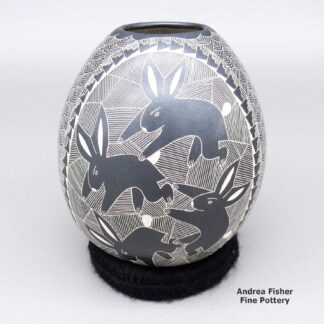
Alex Ortega, zzcg3b107m7, Jar with a geometric design
$185.00 Add to cart -
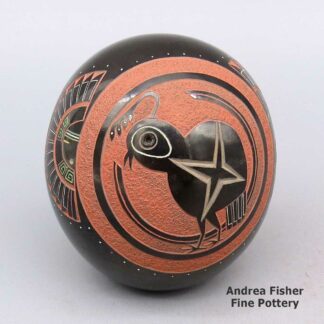
Art Cody, aka Haungooah, lksc2l314: Polychrome seed pot
$1,550.00 Add to cart -
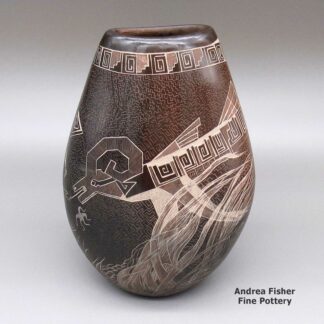
Bernice Naranjo, zzsc3c100, Sienna jar with a sgraffito avanyu and geometric design
$1,900.00 Add to cart -

Candelaria Suazo, zzsc2m090, Black bowl with sgraffito bird and geometric design
$375.00 Add to cart -
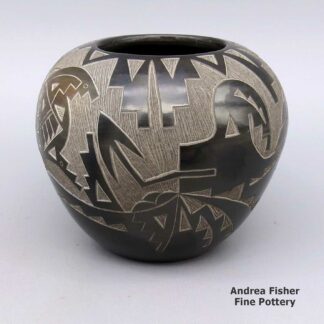
Candelaria Suazo, zzsc2m091, Black bowl with sgraffito design
$325.00 Add to cart -
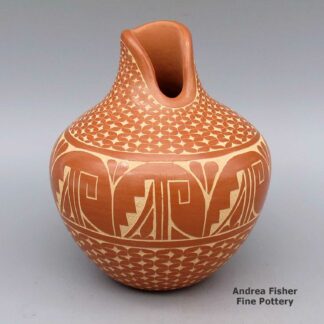
Carol Vigil, zzje2l196, Red jar with sgraffito geometric design
$575.00 Add to cart -
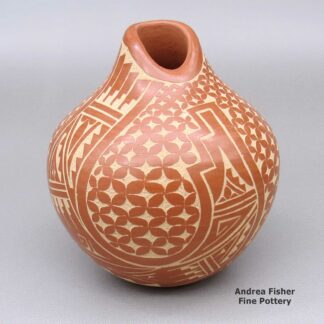
Carol Vigil, zzje2m232, Red jar with sgraffito geometric design
$215.00 Add to cart -
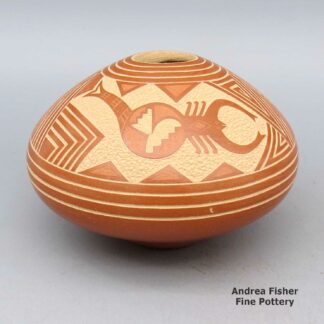
Dennis Daubs, cmje2l084, Red jar with sgraffito geometric design
$525.00 Add to cart -

Elicena Cota, zzcg2g076m4, Polychrome jar with sgraffito geometric design
$295.00 Add to cart -
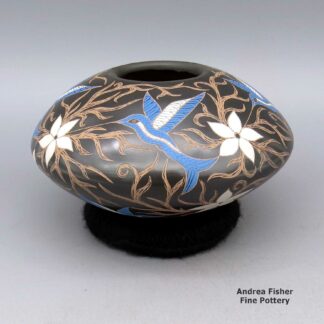
Elicena Cota, zzcg2j320m7: Polychrome jar with sgraffito and painted design
$275.00 Add to cart -
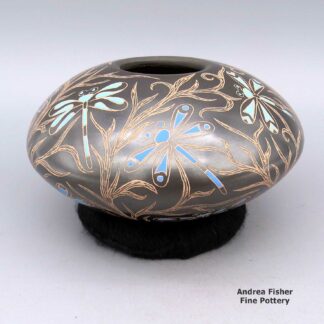
Elicena Cota, zzcg2j320m8: Polychrome jar with dragonfly and branch design
$275.00 Add to cart
Showing 1–12 of 50 results